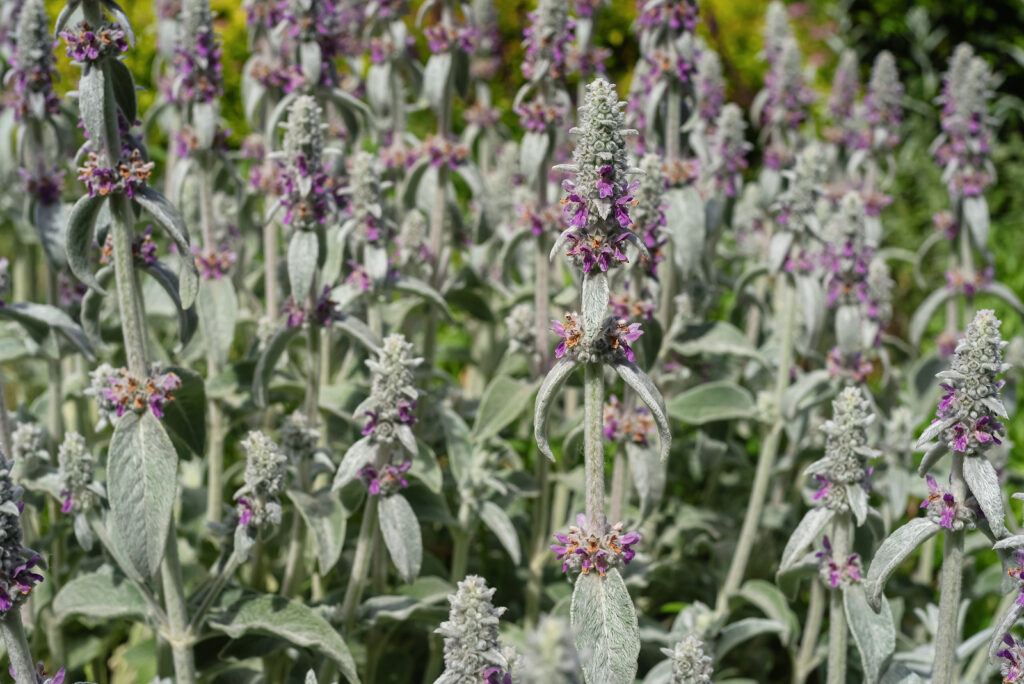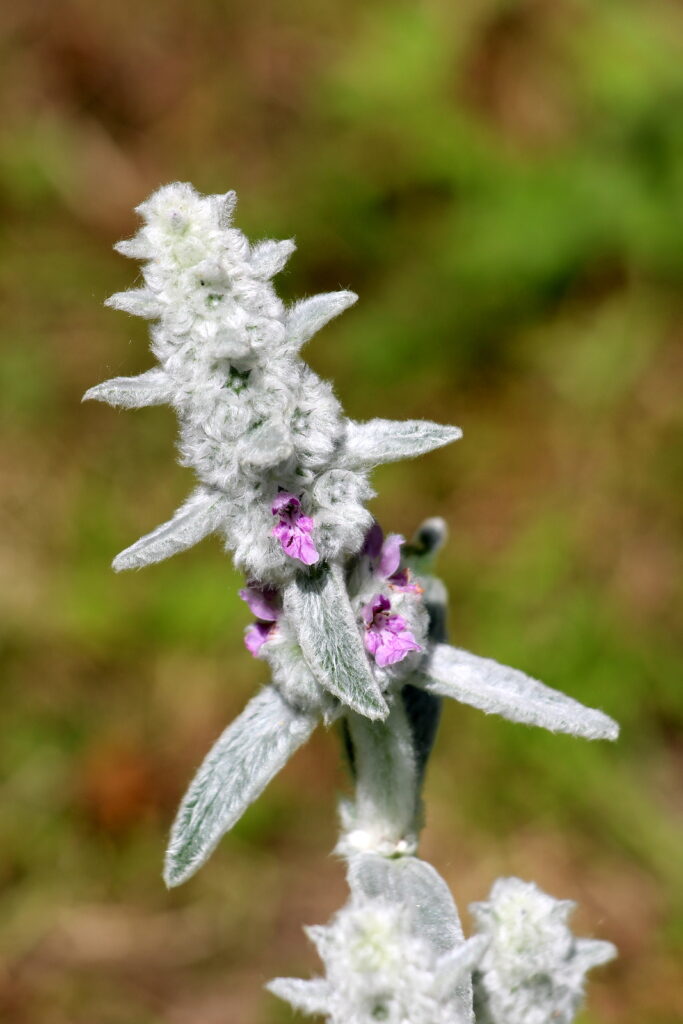Stachys–commonly called lamb’s ears–is a small perennial evergreen most often chosen for its foliage and not its flowers. Stachys produce downy, silvery gray foliage and spikes of small usually mauve-pink flowers in summer. Stachys is a good choice for a sunny bed or path.
Stachys must be planted in well-drained soil. Plants often die out in the center; renew plants by dividing them and replanting the outer sections.
Stachys is a genus of about 300 species of annuals, mostly rhizomatous and stoloniferous perennials.

Get to know Stachys
- Plant type: Perennial
- Growing Zones and range: 4-8
- Hardiness: Hardy to -30°F (-34°C)
- Height and width: 12 to 25 inches (30-63cm) tall; 12 to 18 inches (30-45cm) wide
- Foliage: Basal leaves are lance-shaped or elliptic to ovate, entire to toothed to scalloped and wrinkled.
- Flowers: Tubular, 2-lipped, often hooded flowers often born in racemes or spikes
- Flower colors: Pink, white, or purplish blooms
- Bloom time: Summer
- Uses: edging near walkways and patios, children’s gardens, moonlight gardens
- Common name: Lamb’s Ears
- Botanical name: Stachys byzantina
- Family: Lamiaceae
- Origin: Widely distributed in Northern temperate regions
Where to plant Stachys
- Grow Stachys in full sun with afternoon shade in hot climates.
- Stachys grow in average to poor soil that is well drained.
Stachys uses and companions
- Grow Stachys in a mixed or herbaceous border.
- Stachys bizantina can be used as edging or as a ground cover.
- Good garden companions for Stachys include Armeria maritime, Dianthus, Diascia, Linaria, Perovskia, Salvia, Sedum, Verbena.

When to plant Stachys
- Set Stachys in the garden in spring after all danger of frost has passed.
- Sow seed in spring after all danger of frost is past.
Planting and spacing Stachys
- Space Stachys 12 to 18 inches (30-45cm) apart.
How to water and feed Stachys
- Stachys need moderate moisture; keep the soil evenly moist. Avoid wetting leaves that must dry before the end of the day to avoid disease.
- Stachys need no extra fertilizer when grown in moderately rich garden soil.
Stachys care
- Mulch around Stachys to conserve soil moisture.
- Trim heat-damaged plants as necessary.
- Divide plants every 3 to 4 years.
- Remove tattered leaves to make way for new growth.
- Stachys is prone to crown and root rot in moist and humid conditions.
Stachys pests and diseases
- Prone to powdery mildews and sometimes rust and leaf spot.
- Stachys can be attacked by slugs and caterpillars.

Stachys propagation
- Stachys seeds germinate in 15 to 20 days at 65° to 75°F (18°-24°C)
- Sow seed in containers in a cold frame in autum.
- Divide or remove rooted sections of perennials in spring as growth begins.
- Take greenwood cuttings in early summer.
Stachys varieties to grow
- Stachys byzantina, lamb’s ears: dense, ground-hugging rosettes of soft thick eliptic shaped wooly white leaves; clumps spread by runners; whorls of small purple flowers in late spring; cultivar ‘Silver Carpet’ has no blooms and is a good choice for edging.
- S. macrantha, big betony, bears long-stalked, heart-shaped, wrinkled green leaves; bears shwlly purplish pink flowers; most common is cultivar ‘Robusta’ to 2 feet tall.
- S. officinalis, betony, is similar to S. macrantha; bears purplish or dark red flowers densed packed into short stems; culitvars include ‘Grandiflora Alba’ and ‘Grandiflora Rosea.’



